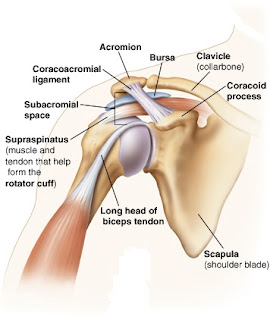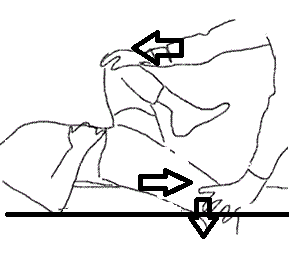Dear Cancer
Fight Cancer.
Strength grows in the moment when you
think you can’t go on, but you keep going anyway. Thank you for making a
thousand people stop for a while and have a look at the lives they have been
living carelessly. The harm that the body was tolerating, and people were not
aware of it, until their body screamed louder.
That is a body’s way to tell that
something terribly wrong has happened to it. Something that might bring you
back to your life that you once lived or it just may not. But we always have
hope. To get up and come back.
Cancer is an abnormal cell growth in
the body which maybe benign or malignant. Benign – which doesn’t spread to
other parts of the body and malignant which spreads to the other parts as well.
According to the studies there are more than 100 types of cancers. Each one has
its own symptoms according to the affected body part.
When a person is diagnosed of cancer,
it is difficult for him or her to accept what just happened. A person undergoes
a state of trauma, both physical and mental. And the very first treatment
approach begins from here, which is awareness and education. When cancer hits a
person, he or she is not the only one dealing with it, but the whole family is
suffering as well. So the education should be given to both, the patient and
the family members. I’ll elaborate this in the later part of the article.
So now the person knows that he is
having cancer, he might be undergoing some systemic problems which are the
symptoms of cancer. Every cancer has its own symptom, for example lump in the
breast or secretions from breast in case of breast cancer or yellowing of eyes
and abdominal pain in hepatic cancer. The diagnostic tests reveals the stage of
cancer and accordingly the treatment protocol to be followed. Commonly, a
cancer patient undergoes chemotherapy and radiation therapy to put a halt at
the unwanted cell growth in the body.
These treatments are tough to
tolerate, and hence there occurs loss of hair, weight loss and fatigue like
symptoms. The role of physiotherapy here is to improve the quality of life of
the patient who has just undergone such harsh treatment. Body requires a
recovery phase. And the physiotherapist helps the person to recover
efficiently.
How does physiotherapy help a cancer
survivor?
There are many side effects of
chemotherapy, and hence all of these are to be taken care of individually.
1. Education and awareness:
It is a life threatening condition of course and hence
patient and his family are in a state of mental trauma. A very few patients can
live their life normally after cancer. The patient and the family are somehow
trying to understand things and make life easier and therefore they should be
told about their condition and treatment protocols to be used. Motivation to
live life normally once again is highly required and the psychological support
is extremely needed. If the patient and the family are having any myths about
cancer they should also be clarified. The important actions to be taken during
and after the treatment should be taught carefully.
2. Lymphedema management:
The accumulation of fluid in a
particular body part if the lymph node has been removed or damaged due to
cancer treatment. The part appears to be enlarged and swollen, commonly arms
and legs accompanied by pain and discomfort.
A physiotherapist manages to drain
out the fluid manually or with the help of external aids. For example, manual
drainage with the massage techniques called effleurage and stroking, use of
compression bandages and stockings not to allow the fluid to accumulate in the
body part or with the help of lymph compression therapy with lympha press®. It is a device used to apply external pressure to the
affected body part from distal to proximal.
3. Cancer-related fatigue:
Cancer related fatigue is a side effect of chemotherapy. It seems
similar to tiredness but it isn’t. Fatigue doesn’t get relived by rest or
sleep. Physiotherapist design an exercise program accordingly to improve
endurance and reduce fatigue.
4. Pain management:
Cancer related pain is subsided by electrotherapy modalities
and sedative techniques. Muscle stimulation and interferential currents are
used to relieve pain in the area. Hot or cold packs are also used to release
muscle tension and manual massage techniques can be given to provide sedative
effects.
5. Exercise:
Adding an exercise prescription to a cancer patient’s routine
is very important. It helps combat the cancer related illness. The regimen
consists of particular days and hours of exercise according to patient’s
current situation. Strengthening exercises can be performed twice or thrice a
week. Optimum range of motion of limbs is restored and muscle re-education is
carried out.
6. Cardiovascular endurance:
A cancer survivor may have a compromised cardiovascular
functioning and therefore it is important to restore the optimal functions of
heart. A cardio routine is added to the exercise prescription which might
include cycling, swimming, jogging etc. beginning from comfortable durations initially
and then increasing the intensity as per patient’s condition.
A cancer survivor is a victim of prolonged bed rest complications
and hence skin care, joint and soft tissue mobilization, pressure sores
management, posture, balance and gait, musculoskeletal dysfunctions, respiratory
complications, strength and flexibility are taken care of.
Physical activity is also important to activate the release
of endorphins for mood regulation and elimination of depression and stress (As I
explained the functions of these hormones in my previous articles).
So nothing is impossible, there’s nothing that you can’t do
to improve your health. All you need is strong will and correct guidance. There
are thousands of cancer survivors all over the world and all it took for them
to kick start their life was their determination and endless hope. Physiotherapy
is always an option for you, in fact it’s a need for you to improve the quality
of life.
Take care,
Jasrah Javed.





Comments